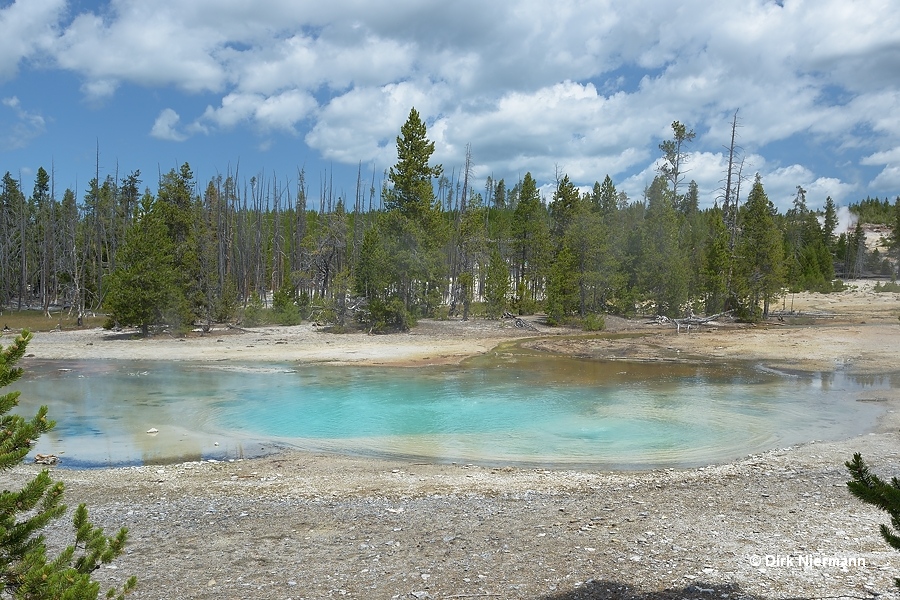Norris Back Basin
Together, Norris Back Basin and Porcelain Basin are part of the same hydrothermal system, a separation is given only by name and by present-day routing of trails. With a length of about 2.7 km (1.7 mile) the Norris Back Basin loop walk includes dirt trails, boardwalks, and wooden stairs. The stunningly beautiful Emerald Spring, usually bubbling just a little bit by gas emissions, is the first stop along the trail.
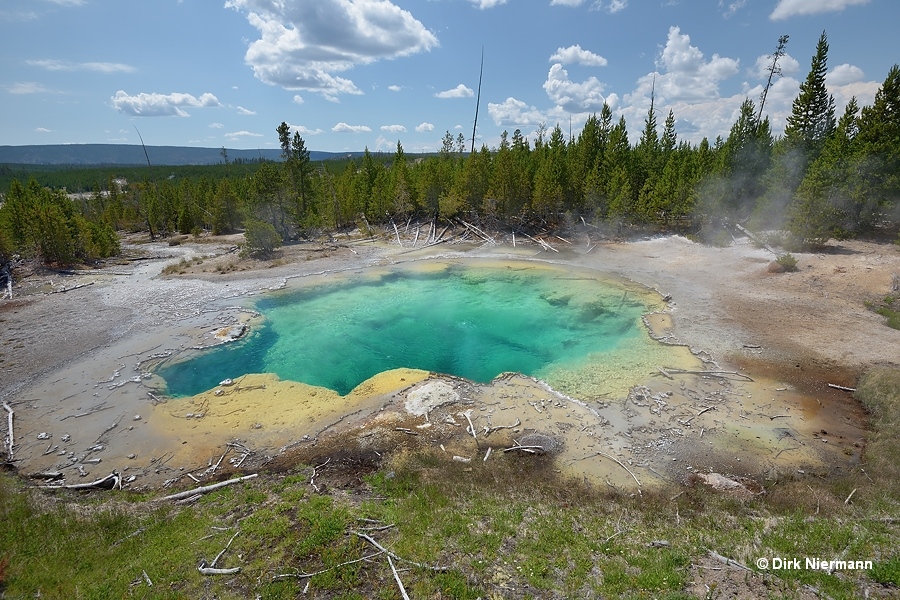
During the so-called "disturbance" of Norris Geyser Basin, Emerald Spring may change its appearance dramatically. From a nearly quiet, green spring sometimes it turns into a murky-brown state, at another time it heats up, becomes deep blue and boils or shows geyser activity. Obviously, the color shift to blue is caused by the temporary vanishing of the spring's yellow sulfur lining, as can be seen on the photo below.
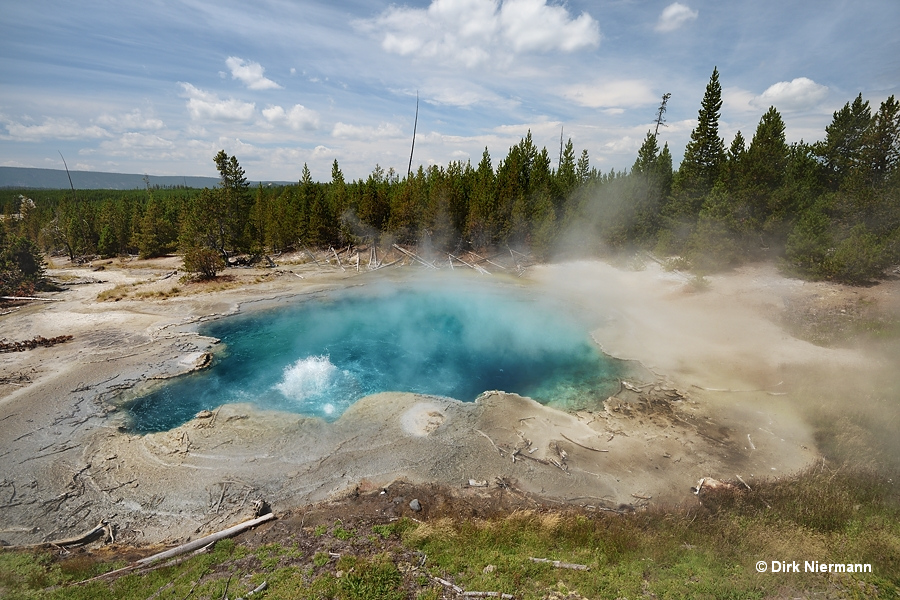
On its way to Steamboat Geyser the boardwalk crosses a bare slope, where far on the lefthand side some small, steaming depressions become visible. The collection of small springs and steam vents is called Dr. Allen's Paint Pots. They are named after geyser researcher Dr. Eugene Thomas Allen, who published the book Hot Springs of the Yellowstone National Park together with joint researcher Dr. Arthur Lewis Day in 1935.
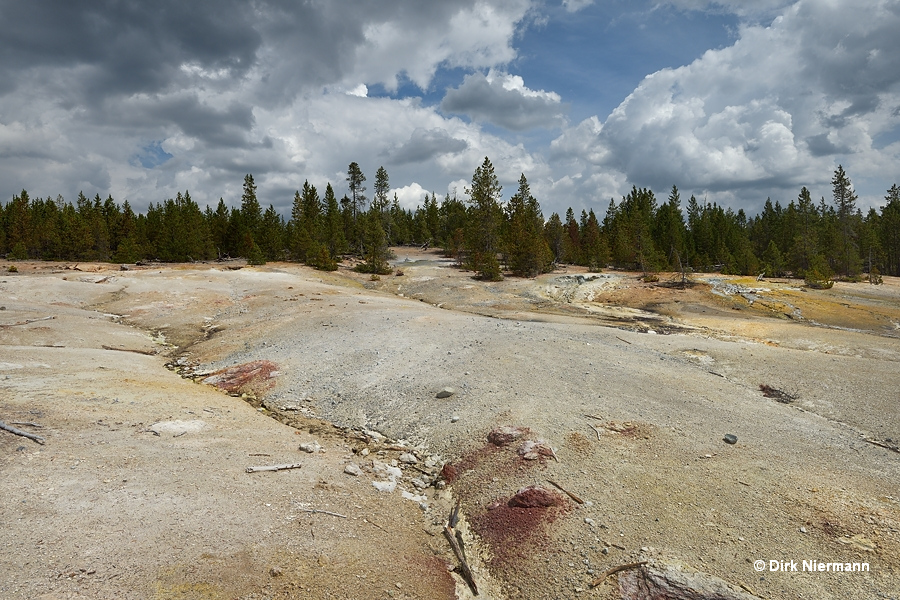
Due to the distance from the boardwalk and the unfavorable viewing angle the content inside the craters is out of sight, but sometimes small-scale bursts can be spotted.
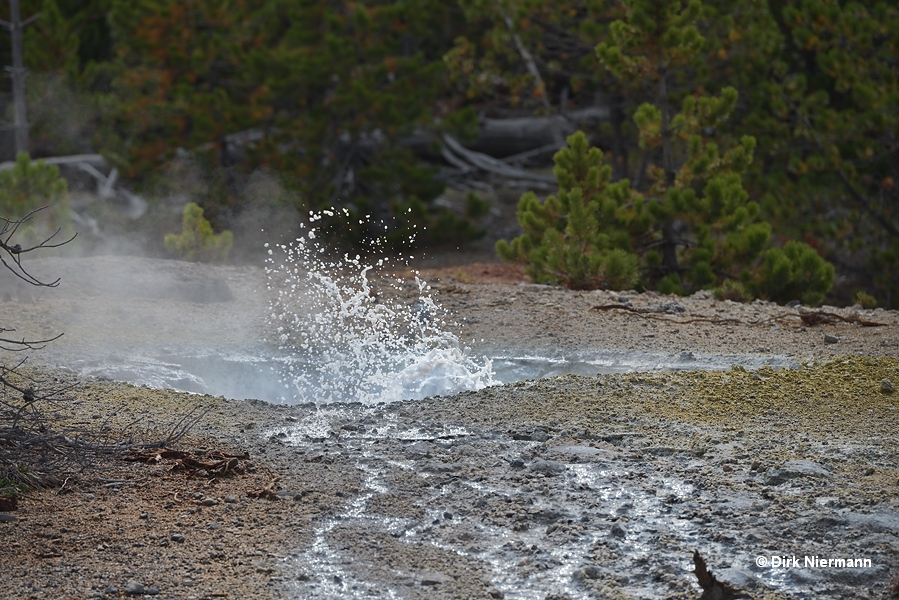
Steamboat Geyser, more than 200 m (250 yards) south of Emerald Spring, greets the visitor with water jets from an exceptionally colorful, but also quite complexly structured crater. Its two vents are out of sight behind sinter mounds, so only the top of the eruptions (they are almost always tall enough, at times alarmingly taller than enough) can be seen.
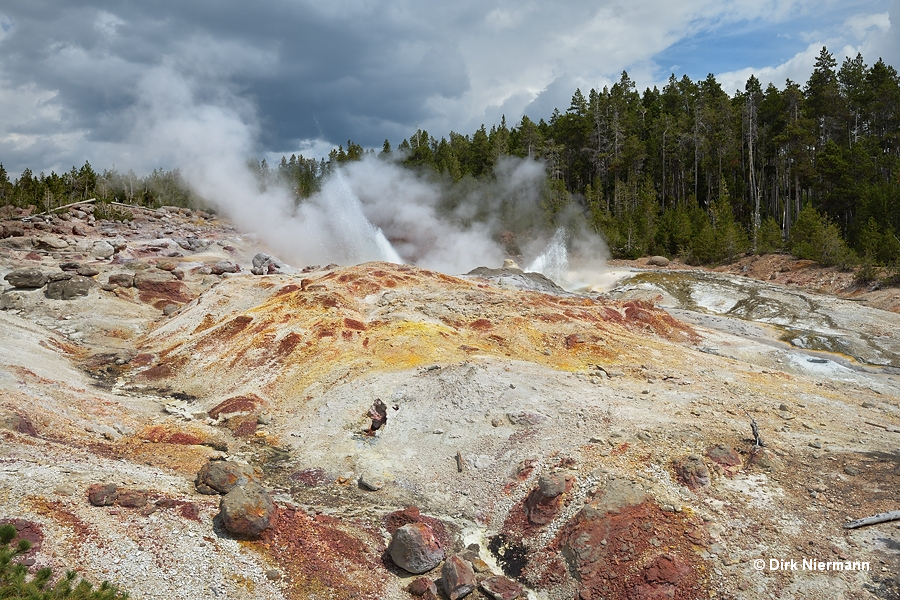
Steamboat Geyser is famous for being the world's largest active geyser. Major eruptions, rising from the north vent, may reach up to 115 m (380 feet), but do occur only once or twice a year, with breaks spanning many years. In contrast, minor eruptions are frequent, reaching 25 m (75 feet) or more.
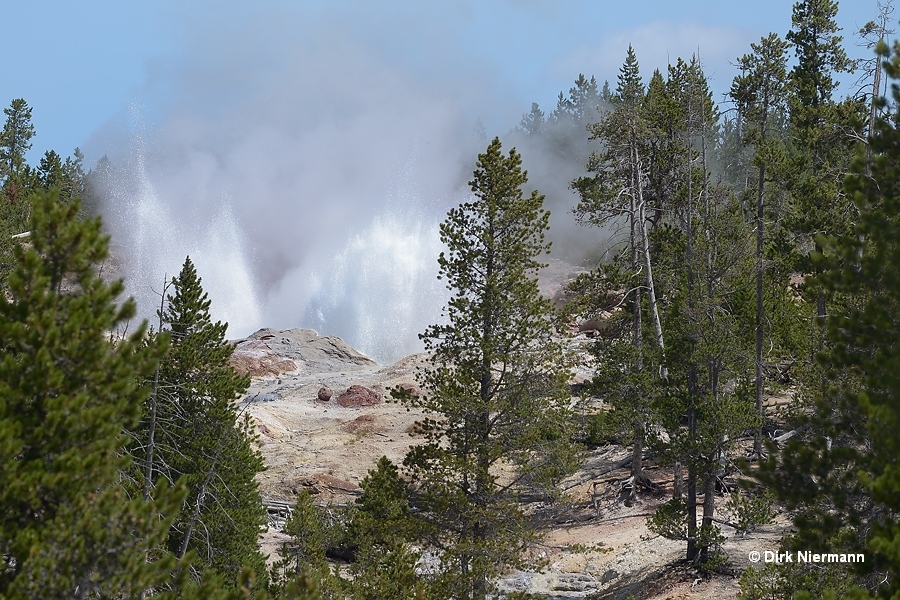
Deep drains of nearby Cistern Spring after major eruptions of Steamboat indicate a subterranean connection between both features, even if the distance is approximately 100 m (330 feet). Usually, the slightly acidic Cistern Spring exhibits a temperature around 78 °C (172 °F) and a greenish overall color, composed of blue water and a yellow sulfur lining on the spring's bottom.
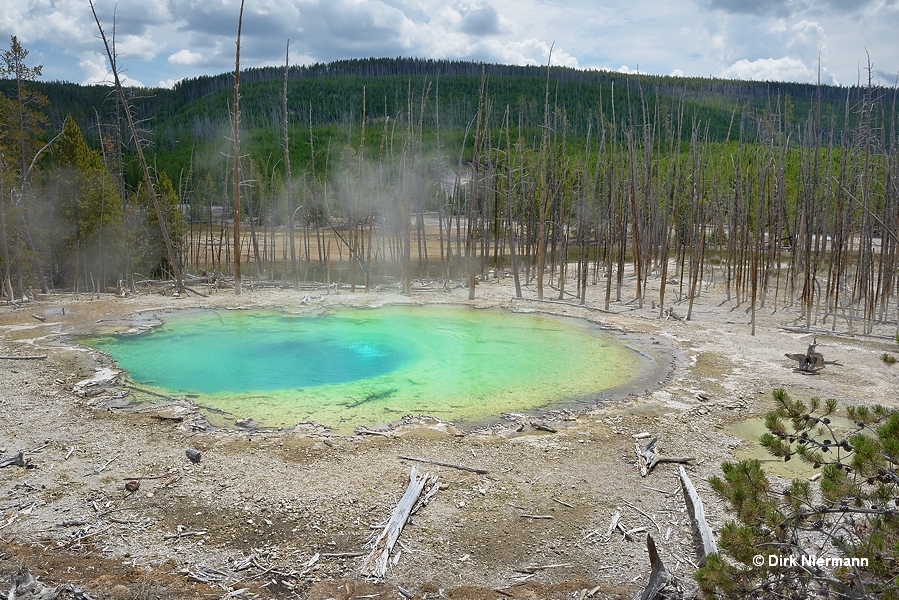
As with Emerald Spring, also Cistern Spring may get into a higher activated state during the time of a disturbance. A rise in temperature becomes evident by a shift from green to blue color inside the bowl, increased overflow leads to pastel-colored runoff areas.
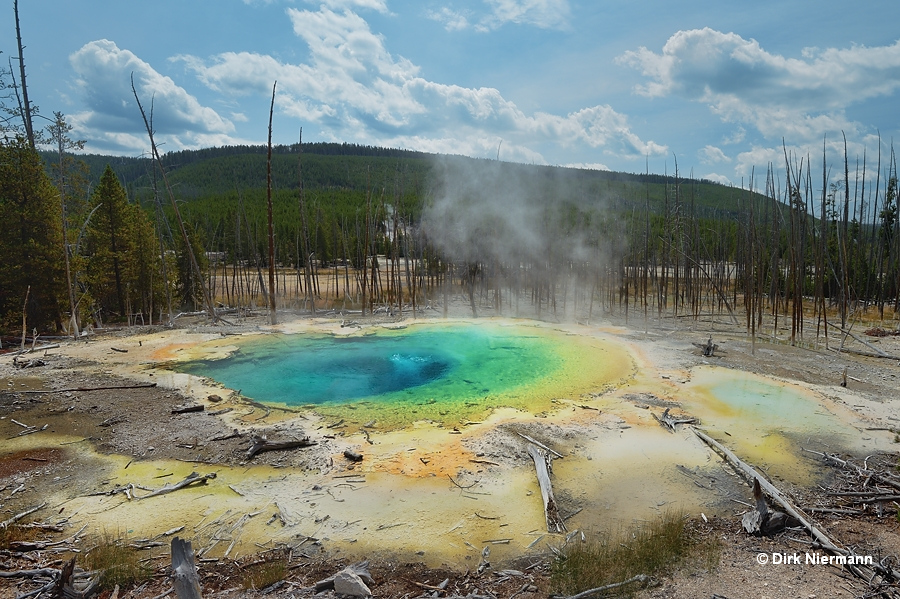
Next stop is Echinus Geyser. Just before reaching Echinus, two small features, Black Pit and Sulphur Pot, flank the boardwalk on opposite sides.
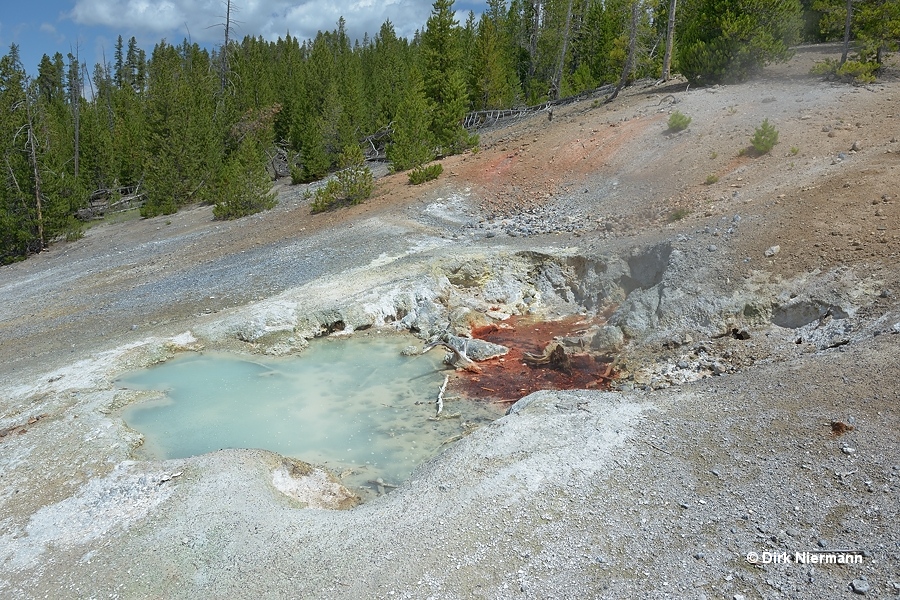
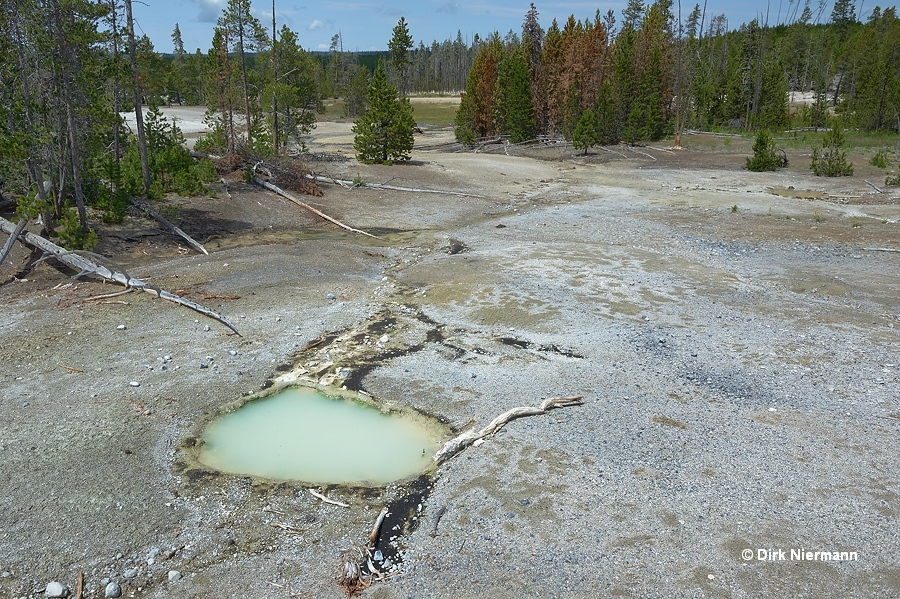
Between the 1970s and the 2000s Echinus Geyser used to be a frequent performer, although not always showing regular intervals. Its eruptions reached up to 25 m (75 feet). Unfortunately, Echinus has fallen dormant in 2005, but a short period of reactivation from September to November 2017 augurs well for the future.
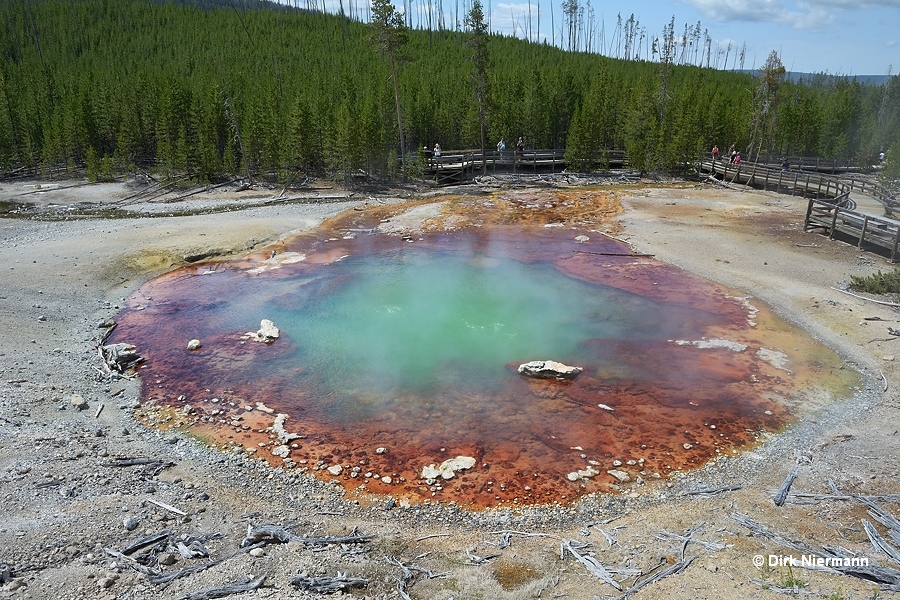
After Echinus Geyser the boardwalk curves west to Crater Spring. Different modes of activity are known from this spring, from geyser eruptions to perpetual spouting to quiet overflowing. Intermittent eruptions seem to be the great exception, though.
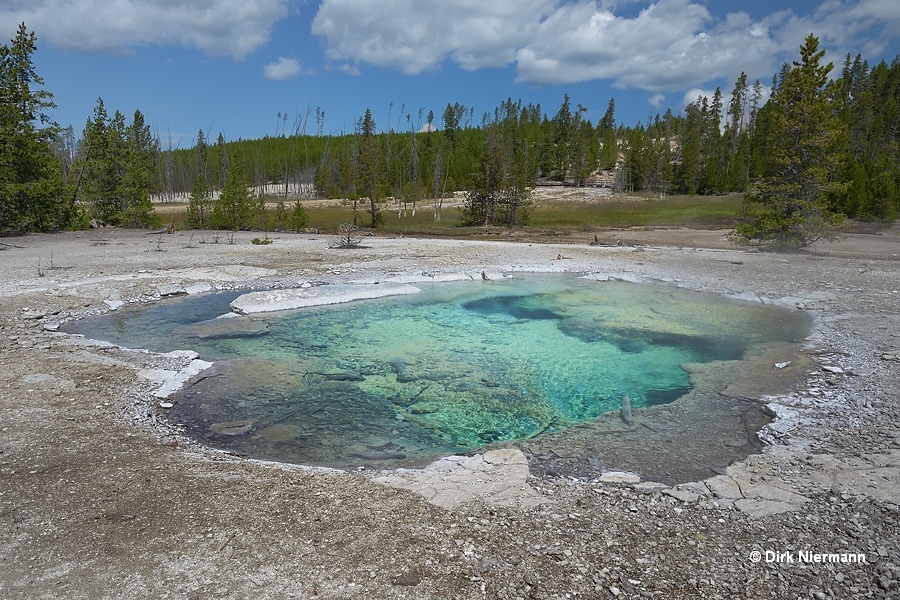
West of Crater Spring along the the edge of the wood, the quiet hot springs Root Pool, NBBNN025 and Dishwater Spring are lined up.
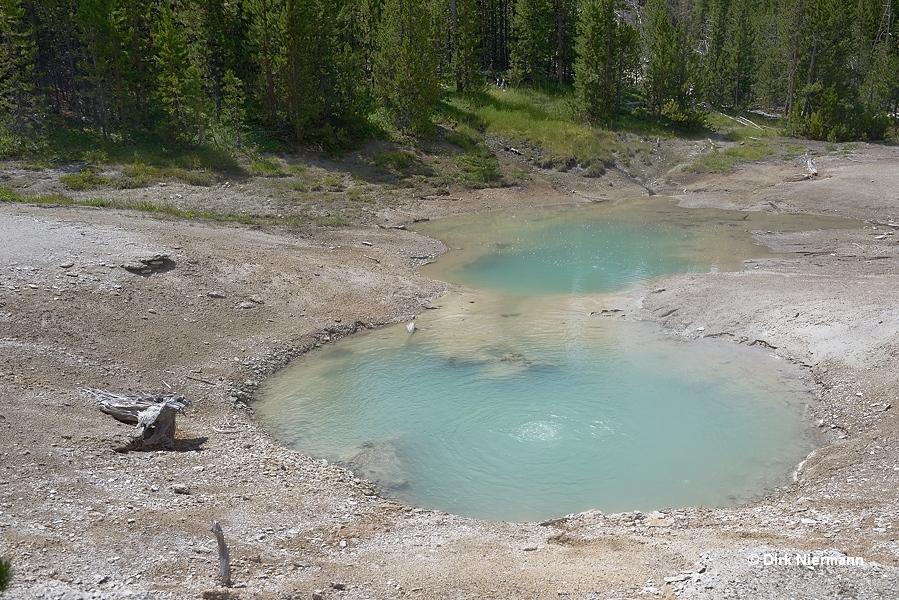
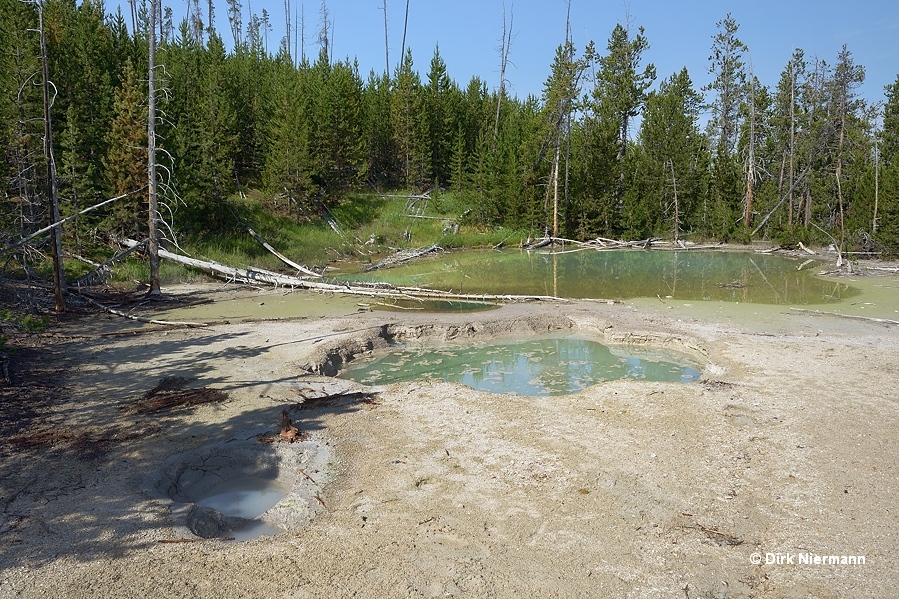
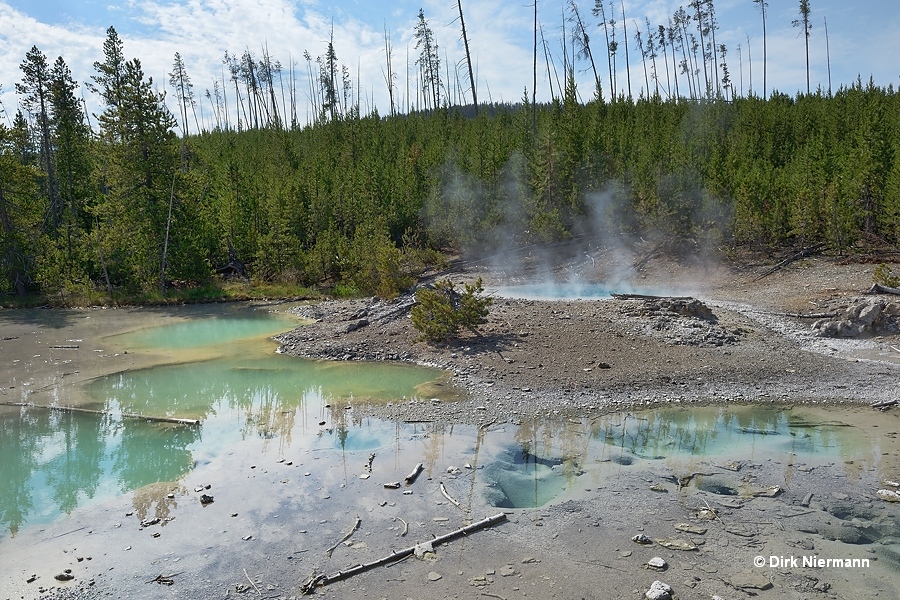
Sitting on a slope between Root Pool and NBBNN025, Arch Steam Vent used to be an exceptional feature. The fumarole was bridged by a sinter arch, which collapsed in 1968.
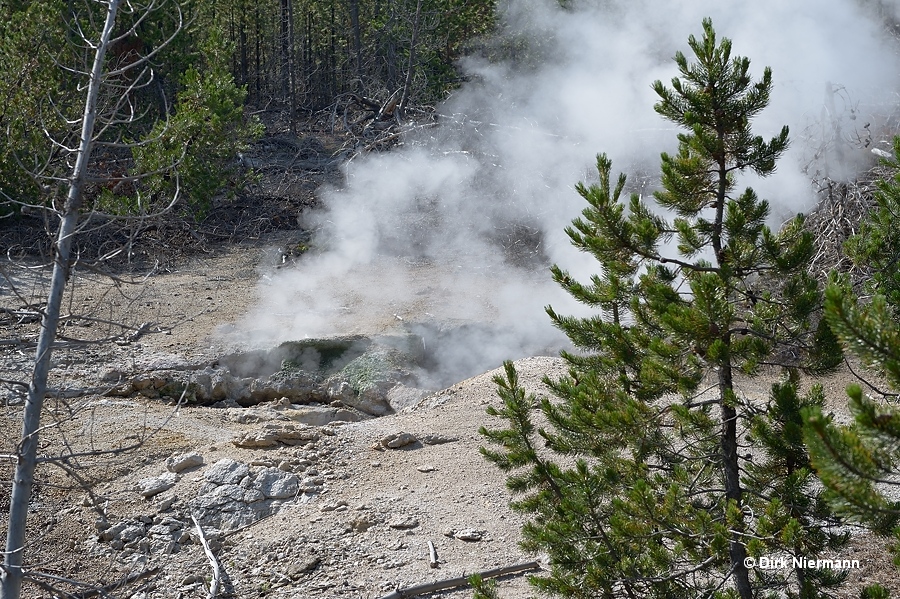
Tantalus Geyser is located across the boardwalk from NBBNN025 in Tantalus Creek, traversed by the merged runoff channels of Echinus and Steamboat geysers. Eruptions of size were seen in 1969, from then on only weak splashing, if at all.
